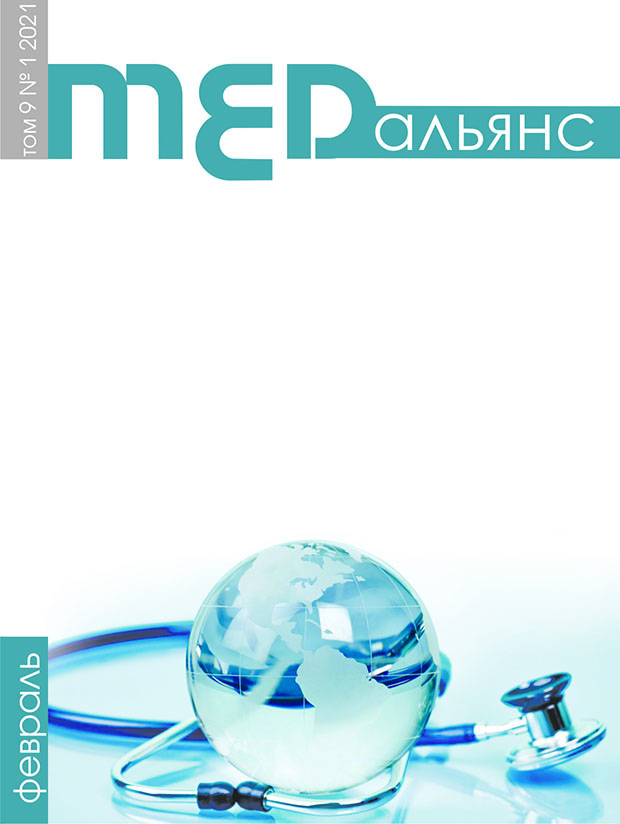Abstract
Introduction. Coronavirus infection 2019 (COVID-19) is characterized by high morbidity and mortality. Interleu-kin-6 receptor inhibitors, including tocilizumab, are used for the anti-inflammatory therapy of COVID-19. The aim of the study was to compare the clinical, lab and radiation characteristics of surviving and deceased patients with severe COVID-19 and pneumonia caused by SARS-CoV-2 who received tocilizumab and identify features that were associated with various outcomes.
Methods. The medical records of 31 hospitalized COVID-19 patients were studied. All patients received a single dose of tocilizumab 400 mg. Two groups were created. Group 1 included 17 patients who were discharged with improvement, Group 2–14 fatal cases. The methods of parametric and nonparametric statistics were used for processing.
Results. The condition of patients from Group 2 more often than in Group 1 was assessed as severe already at admission, p=0.022. Only 4 patients from Group 1 and all patients from Group 2 were allocated to the intensive care unit; the mechanical ventilation was used exclusively in group 2, p <0.001. The groups differed in terms of the SpO2 level, p=0.023, and the concentration of C-reactive protein (CRP) at admission, p=0.047, as well as in the volume of lung tissue damage, p=0.027. Tocilizumab was administered to all patients within a comparable period from the onset of the disease. There was an increase in the neutrophil/lymphocyte ratio in peripheral blood (NLR) by the day of its administration in Group 2, p=0.026. The NLR level increased even more significantly within 5–7 days after administration, p=0.045 (p=0.007 compared to baseline). The NLR value in Group 2 changed insignificantly. The blood ferritin level in patients from Group 1 by the day of tocilizumab administration was lower than in Group 2, p=0.014, and decreased after the treatment, p=0.01, in contrast to Group 2. The decrease in the CRP concentration after the appointment of tocilizumab in Group 1 was also significant, p=0.001.
Conclusions. The deceased COVID-19 patients who received tocilizumab were characterized, compared with the survivors, by the initially more severe course of the disease, more pronounced hypoxemia, as well as the volume of lung tissue damage and laboratory abnormalities, including the levels of NLR, CRP and ferritin. Monitoring of these indicators appears to be necessary to assess the course of COVID-19 and make a decision on the anti-inflammatory therapy with tocilizumab.

